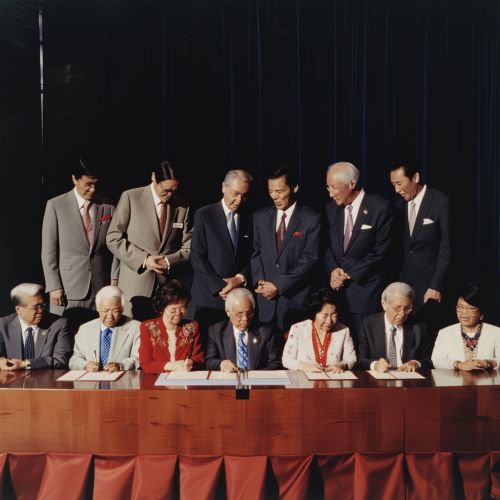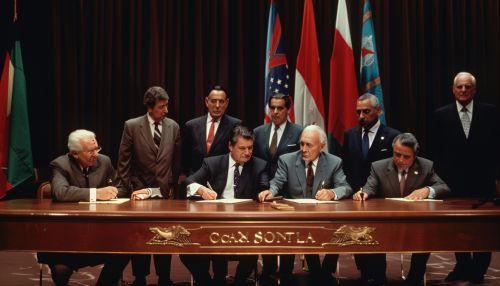Warsaw Pact
Formation and Purpose
The Warsaw Pact, formally known as the Treaty of Friendship, Cooperation and Mutual Assistance, was a collective defense treaty established among eight communist states of Central and Eastern Europe during the Cold War. It was established in 1955 in Warsaw, Poland, in response to the integration of the Federal Republic of Germany into NATO. The pact was a countermeasure by the Soviet Union to prevent defection of its satellite states to the West.


Member States
The founding member states of the Warsaw Pact were the Soviet Union, Albania, Poland, Hungary, East Germany, Czechoslovakia, Romania, and Bulgaria. Albania withdrew from the pact in 1968 following the Prague Spring, and it was never officially a member again. East Germany left the pact in 1990 during the reunification process with West Germany.
Military Structure and Strategy
The Warsaw Pact's military command structure was dominated by the Soviet Union, which controlled the unified armed forces' strategic planning. The pact's main strategy was to act as a deterrent against any potential aggression from NATO. The Warsaw Pact forces were organized into three tiers: strategic, operational, and tactical. The strategic tier was responsible for nuclear and conventional strategic strikes, the operational tier was responsible for theater operations, and the tactical tier was responsible for local operations.
Political and Social Implications
The Warsaw Pact had significant political and social implications for its member states. It reinforced the Soviet Union's control over its satellite states and ensured their loyalty to the communist bloc. The pact also had a profound impact on the societies of its member states, as it led to the militarization of their economies and societies.
Dissolution
The Warsaw Pact was dissolved in 1991 following political changes in Eastern Europe and the end of the Cold War. The dissolution of the pact was a significant event in the history of Europe, as it marked the end of the division of the continent into two opposing military alliances.
Legacy
The legacy of the Warsaw Pact is complex and multifaceted. On one hand, it is seen as a symbol of Soviet domination and control over Eastern Europe. On the other hand, it is also seen as a significant factor in maintaining peace in Europe during the Cold War.
